|
12:38.726
S 131:00.548 E
5th
– 8th July 2007
Kakadu
National Park
A
5.30am start allowed us to get to Fogg Dam for daybreak, the cacophony of
bird noise was almost unbelievable as were the number of mosquitoes
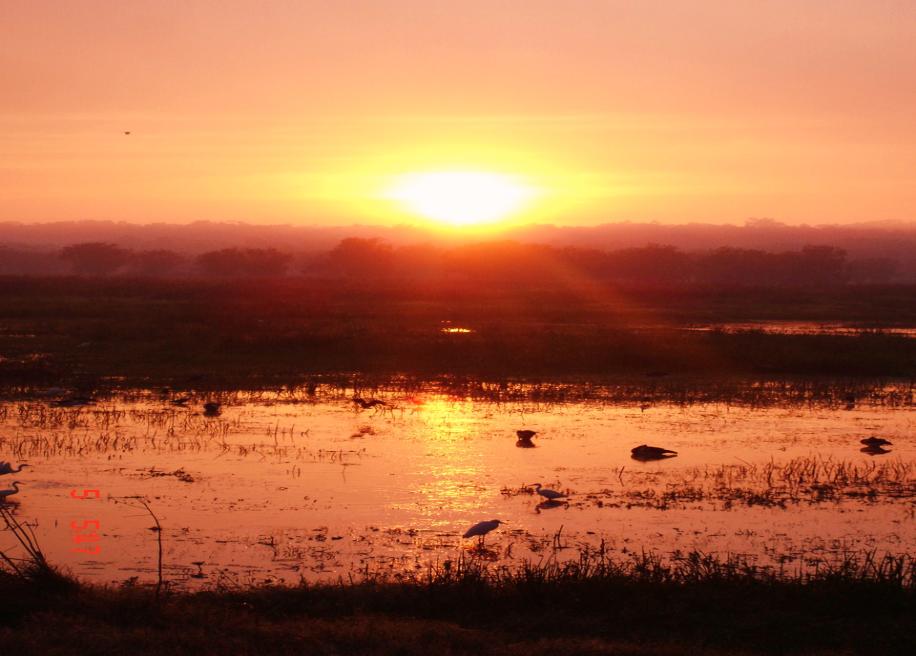
The park is a unique archaeological
and ethnological reserve, located in the Northern Territory of Australia. It
has been inhabited continuously for more than 40,000 years. The cave
paintings, rock carvings and archaeological sites record the skills and way
of life of the region’s inhabitants, from the hunter-gatherers of
prehistoric times to the Aboriginal people still living here. It is a unique
example of a complex of ecosystems, including tidal flats, floodplains,
lowlands and plateaux. It provides a habitat for a wide range of rare or
endemic species of plants and animals.
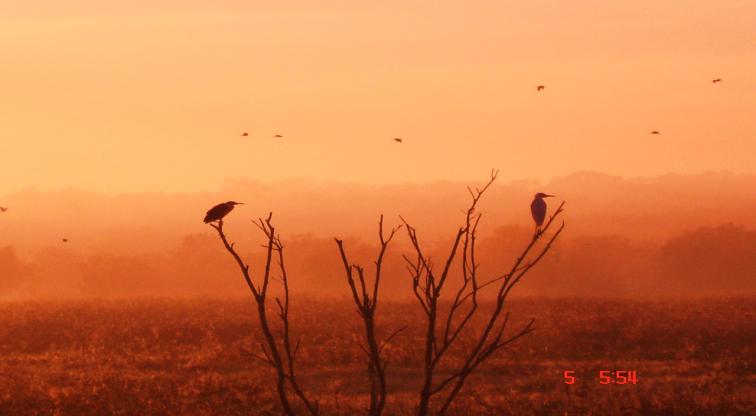
Cattle
Egrets watching over the sunrise at Fogg Dam
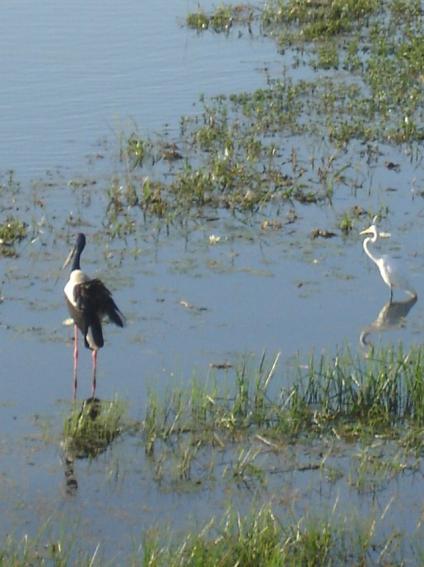 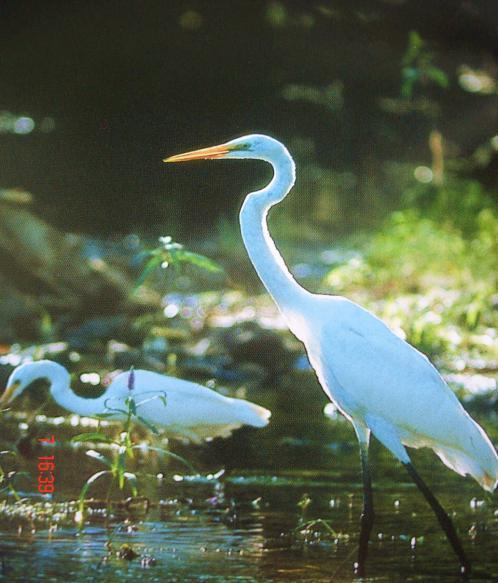
Jabiru
or Black necked stork with Intermediate Egrets at Fog Dam Conservation
Reserve

Radjah
Shelducks

We thought about hiring this
floating home from Mary River Houseboats, but due to very little notice,
ended up renting a small aluminium boat for the day instead, a very pleasant
way to get close to abundant wildlife on the that river, and get back on the
water again after spending so much time on the road!
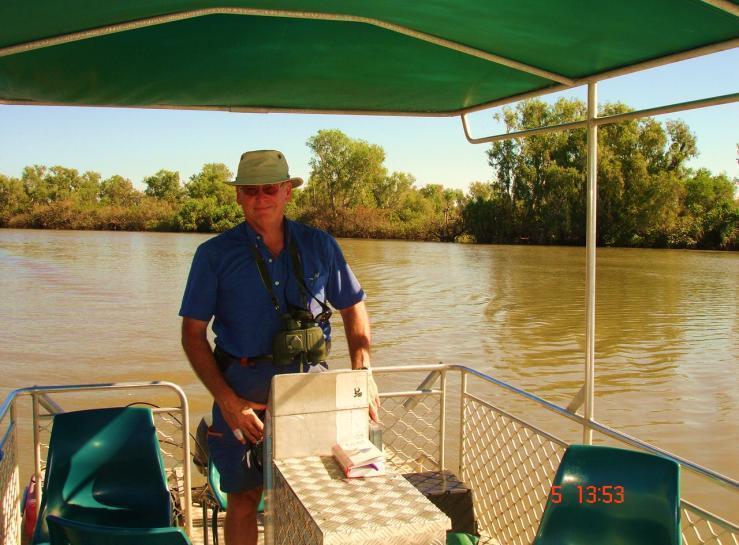
At
least we had plenty of caging around us to protect us from these Salt Water
Crocodiles
Basking
on the banks of the river!
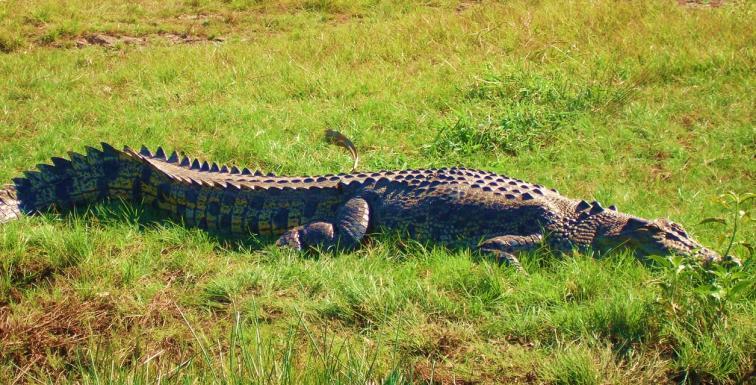
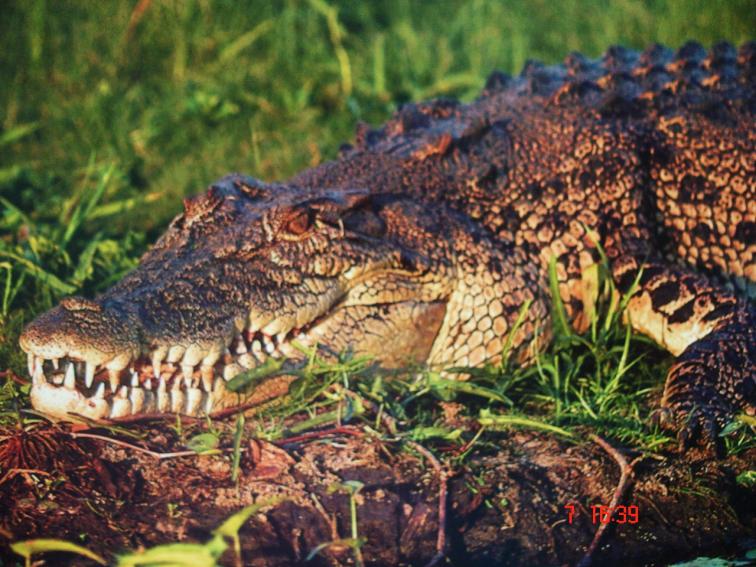
No
need to say how vicious the ‘Salties’ jaws are, his kind having
been around for 25million years!
 
This white bellied sea-eagle was
one of many that kept us enthralled watching over their nests. This Jabiru
must have been a young one, as he should have a white neck and red legs!
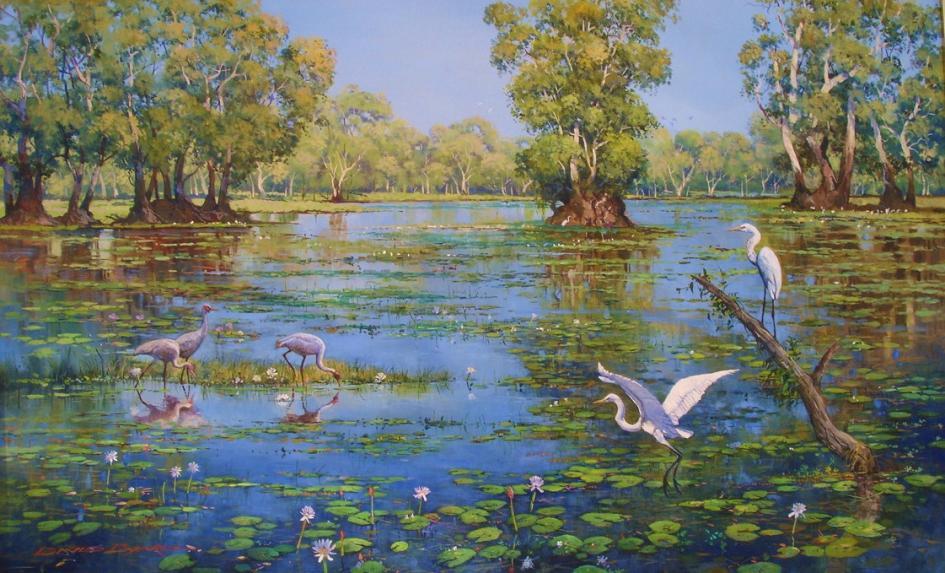
This
oil painting by David Byard gives the best impression of the surroundings we
had cruising up the river

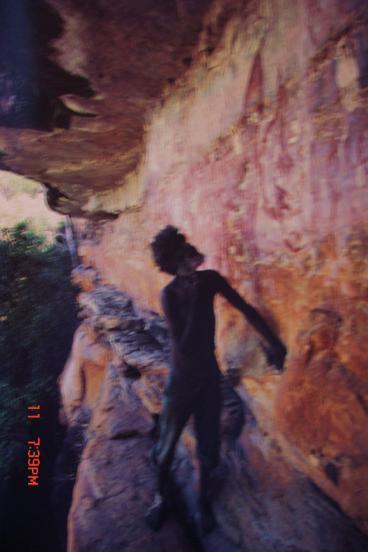
These
escarpments have many rock overhangs in which the Aborigines sheltered from
the deluges in the rainy season, many of which are sacred sites where they
painted their ‘dreamings’ of their cultural history for teaching
to the younger members of their clan. It is one of the longest continuous
traditions of art in the world, dating back at least 50 thousand years. We
were lucky enough to get permit to entre Arnham Land for the day in order to
visit the Aboriginal lands
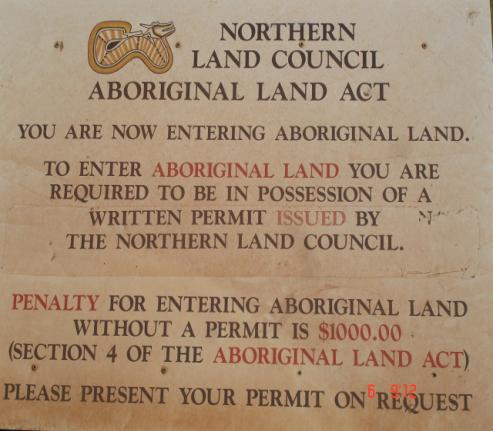 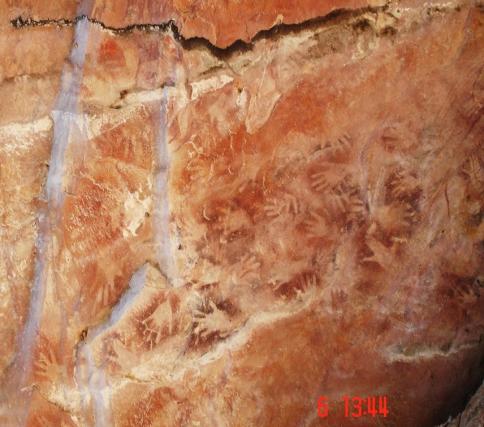
The
paintings of hands are the oldest paintings, becoming more sophisticated 20
thousand years ago
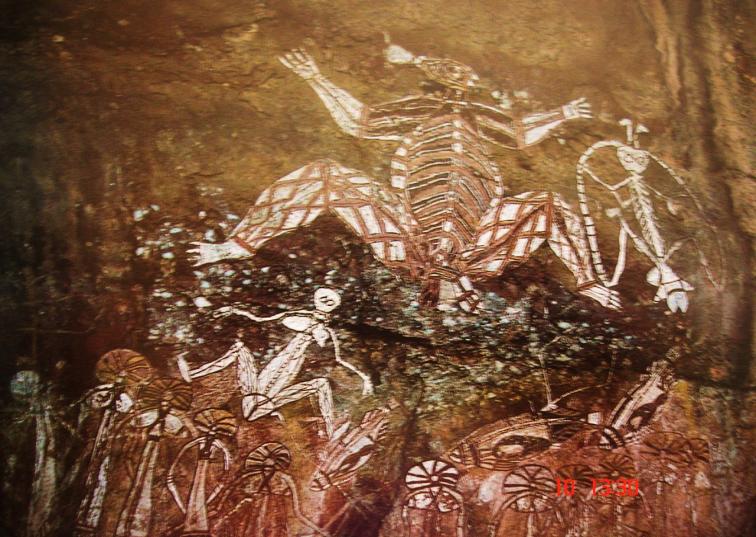
Namarndjolg
is the large figure next to the lightning man at top right. He and his
sister broke the incest laws on the rock ledge above this gallery, and later
became Ginga the great saltwater crocodile. With his wife, they became
parents to Aljura, the Leichardt’s grasshopper, which appears when the
first storms break.
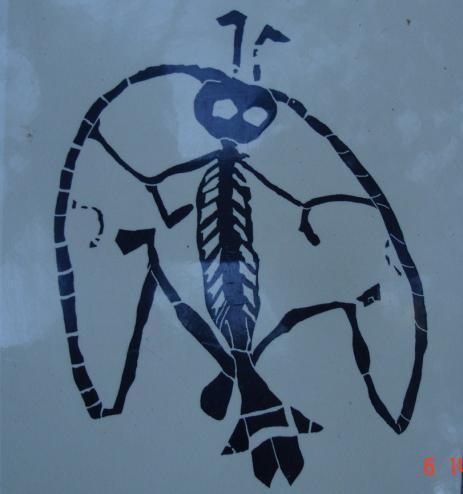 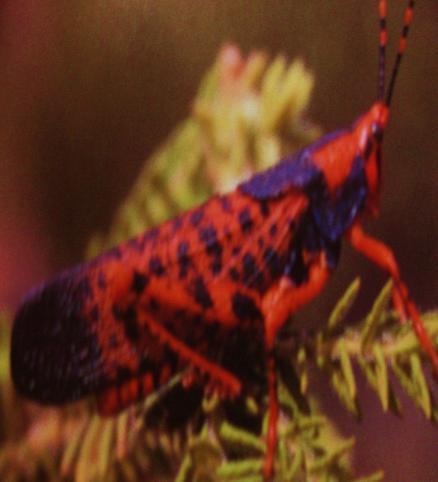
Lightning Man
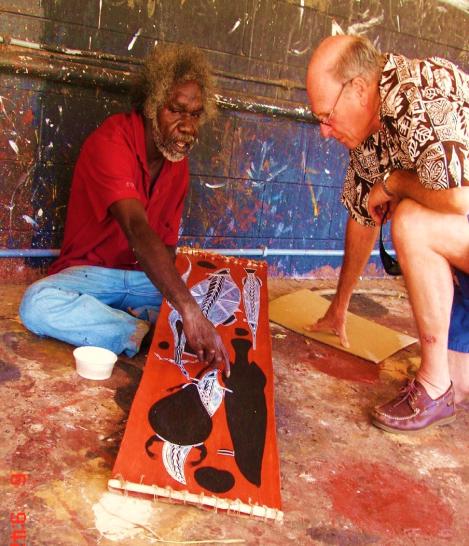 
David is watching Graham painting
stretched tree bark in traditional paint made from Red Ochre,(you can see
where the paint
Is made on the ground) yellow
ochre and white clay made from rubbing the stone on the ground with water and
glue. The black is made from charcoal.
 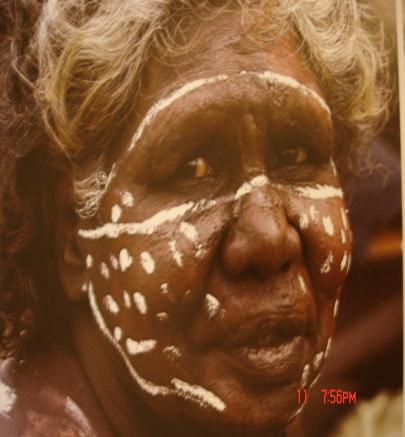
Hamilton is painting a totemic pole
with his clans symbols. This lady is painted for a woman’s ritual
ceremony.

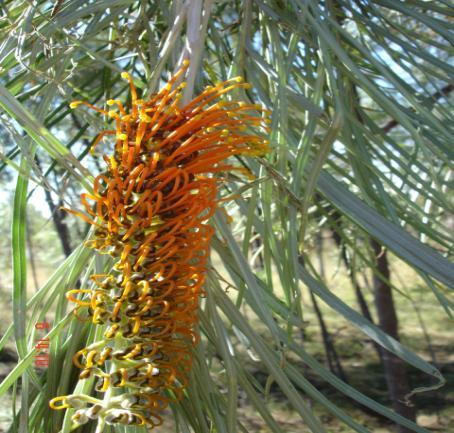
Alguyo, the fire woman is one of
the first people who created the world. She planted the yellow banksia
trees in the woodlands and used their smouldering flowers to carry fire.
Dingoes travelling with her helped her to hunt possum.
Nayuhyoonghoe created the world and
gave future generations laws to live by. Some took on human forms, others
changed from humans to animals. All have special powers. These people are
invisible to normal people. They live in caves and hollow trees and come out
at night. Some have 6 fingers on each hand and carry dilly bags for their
victims liver!
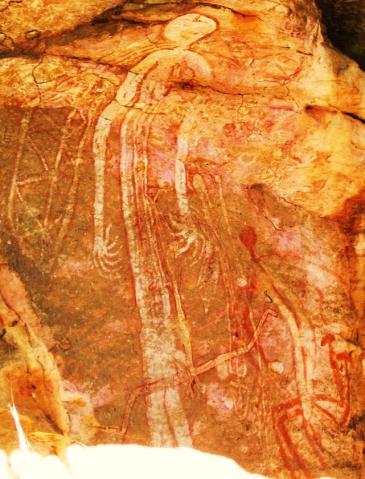 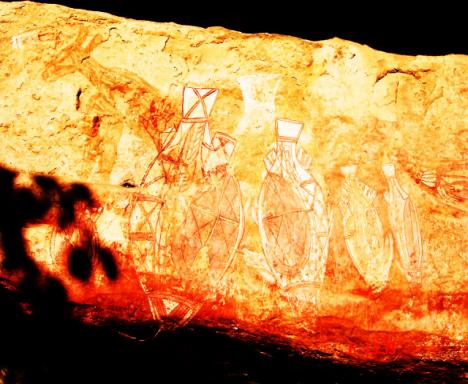
These fish, with x-ray interiors are more recent, 10,000 yrs old!

Modern
day rainbow serpent in the process of being painted above, with one ancient
style of rainbow serpent below,
Painted
on a sacred rock site, showing the story of his creating people by
regurgitating them
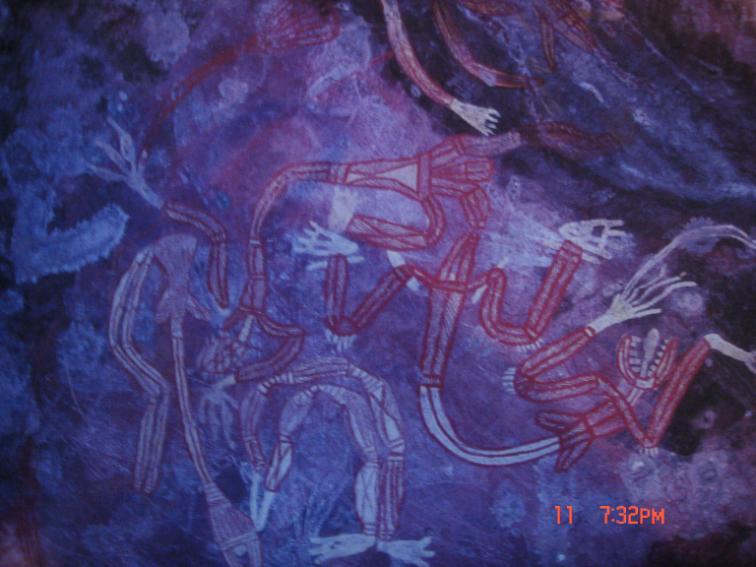
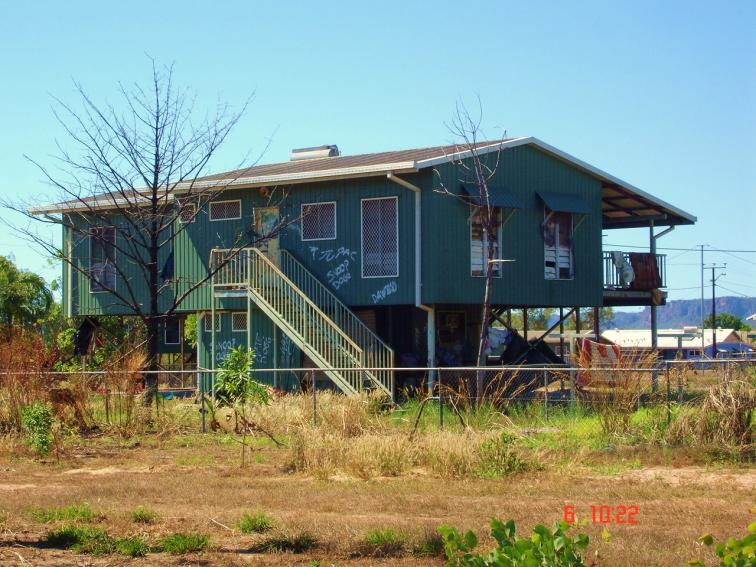
One
of the Aboriginal houses in Oenpelli, care of the Australian Government
There
is a move afoot to try and get them to buy their own houses, but it is
unlikely to be successful, as Aboriginal culture only understands sharing and
do not believe in owning anything other than their cultural heritage.
Some
of the Aboriginal artists are now earning large sums of money, their work is
so sought after. However, all their money is shared amongst their family,
and they show very little signs of any improvement in their own life style.
It seems to be the younger generation who use the money to buy big cars,
TV’s and radios, but then of course those family members never get to
learn the artistic skills of their elders.
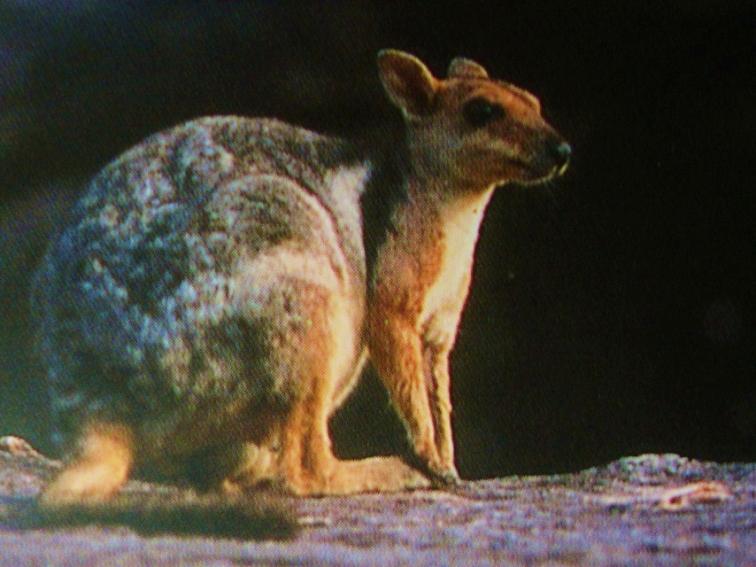
We
saw quite a few of these small eared rock wallabies whilst we were walking
too
|

